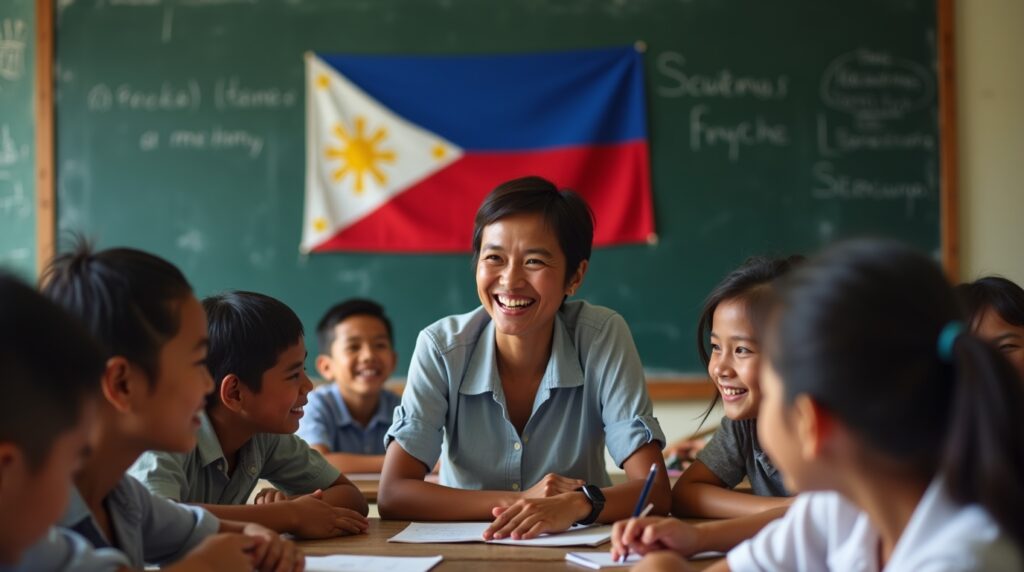In the age where “Kumusta ka?” (How are you?) is just a tap away, Filipino overseas workers and migrants have mastered the art of turning social media into their virtual barangay hall. Remember the days when keeping in touch meant expensive long-distance calls and letters that took weeks to arrive? Those times are about as outdated as dial-up internet and Nokia 3310s (though we’ll always have a soft spot for Snake). Today, our kababayans (fellow Filipinos) are wielding their smartphones like modern-day magic wands, conjuring connections across continents with the power of likes, shares, and heart reacts.
The Numbers Tell the Story: Filipinos Online
Before we dive deeper into this digital phenomenon, let’s look at some eye-opening statistics that show just how connected Filipinos are in the digital space:
| Metric | Value | Source |
|---|---|---|
| Social Media Users in Philippines (2023) | 92.1 million | DataReportal Digital 2023 |
| Daily Social Media Usage (hours) | 4.1 hours | We Are Social 2023 |
| Facebook Users in Philippines | 84.4 million | Statista 2023 |
| OFWs Worldwide (2022) | 1.96 million | Philippine Statistics Authority |
| Internet Penetration Rate | 73.1% | DataReportal 2023 |
Facebook: The Modern-Day Sari-Sari Store
Where Everyone Knows Your Name (And Your Last Three Meals)
Facebook has become the digital equivalent of the neighborhood sari-sari store – a place where everyone congregates, shares stories, and maybe even a little chismis (gossip). For OFWs, it’s transformed into something far more meaningful than just a social network. It’s where they watch their children grow up through photos, celebrate birthdays via video calls, and keep up with the latest family drama through messenger group chats. Studies from the University of the Philippines’ Migration Center show that 98% of OFWs use Facebook as their primary platform for maintaining family connections, proving that Mark Zuckerberg might just be the modern-day hero of the Filipino diaspora (though still not as popular as Manny Pacquiao, let’s be real).
The Rise of Digital Remittance and Support
More Than Just Money Transfers
Gone are the days when sending money home meant standing in long queues at remittance centers. Social media platforms have evolved to become more than just communication tools – they’re now integral to the support system of Filipino families separated by oceans. Apps like GCash and PayPal, promoted heavily through social media channels, have revolutionized how OFWs support their families back home. According to the Bangko Sentral ng Pilipinas, digital remittances grew by 164% between 2019 and 2022, with social media platforms playing a crucial role in educating users about these services and providing support networks for first-time users.
Virtual Celebrations: The New Normal
Zoom Parties and Digital Handaans
Who says you can’t attend your cousin’s debut or your niece’s graduation when you’re thousands of miles away? Filipino migrants have mastered the art of virtual celebration, creating elaborate online parties complete with digital backgrounds, synchronized playlists, and yes, even virtual “videoke” sessions (because it’s not a Filipino party without videoke). Social media platforms have become the venue for these digital handaans (gatherings), where family members from different time zones come together to celebrate milestones, holidays, and even simple Sunday lunches. According to a survey by the Philippine Migration Research Network, 76% of OFW families reported participating in at least one virtual celebration per month, showing how technology has helped preserve traditional Filipino family gatherings despite physical distances.
The Language of Love: Emojis, GIFs, and Memes
Speaking Fluent Filipino Internet
Filipinos have developed their own unique digital language, combining English, Tagalog, their local dialect, and a healthy dose of emojis and memes. Social media has become the perfect platform for this evolving digital language, where a simple “❤️” can mean anything from “I love you” to “The money has been sent” to “Yes, I’m still alive.” Research from the University of Santo Tomas Digital Communications Department shows that Filipino social media users are among the most expressive in Southeast Asia, using an average of 8 emojis per social media post – because sometimes, words just aren’t enough to express how much you miss your mom’s sinigang.
Digital Support Groups: Finding Your Tribe Online
Building Communities in the Cloud
Social media has given birth to countless online Filipino communities, offering support, advice, and a sense of belonging to those far from home. Facebook groups like “Pinoy sa [insert country]” have become essential resources for newcomers, providing everything from job listings to apartment hunts to recommendations for the best Filipino stores in the area. These digital communities have become so influential that according to a 2023 study by the Commission on Filipinos Overseas, 82% of new migrants reported joining at least three Filipino-focused social media groups before even leaving the Philippines.
The Dark Side of Digital Connection
When Too Much Social Media Becomes Too Much
While social media has been a blessing for maintaining connections, it’s not without its challenges. The pressure to constantly update family members, the fear of missing out on important moments, and the stress of maintaining an online presence can take their toll. Mental health professionals at the Overseas Workers Welfare Administration (OWWA) report that 45% of OFWs experience some form of social media-related anxiety, highlighting the importance of finding a balance between staying connected and maintaining personal boundaries.
Looking to the Future: The Evolution of Digital Connection
What’s Next for the Filipino Digital Diaspora?
As technology continues to evolve, so too does the way Filipinos connect across borders. Virtual reality platforms are already being tested for more immersive family gatherings, while artificial intelligence is making real-time translation of Filipino languages more accessible than ever. The Philippine Department of Information and Communications Technology predicts that by 2025, 95% of Filipino families with members working abroad will utilize some form of emerging technology for communication, suggesting that the future of staying connected is only getting brighter (and possibly more high-tech).
Practical Tips for Meaningful Digital Connection
Making the Most of Social Media Without Losing Your Sanity
Here’s a practical guide based on recommendations from OFW support groups and mental health professionals:
| Best Practice | Why It Matters | Implementation Tips |
|---|---|---|
| Set Regular Check-in Times | Creates routine and manages expectations | Schedule weekly video calls |
| Create Private Family Groups | Ensures privacy and intimate sharing | Use Facebook’s private group features |
| Document Daily Life | Helps bridge the distance gap | Share short videos and photos of daily activities |
| Balance Online/Offline Time | Maintains mental health | Set specific “offline” hours |
| Use Multiple Platforms | Ensures backup communication methods | Combine Facebook, Viber, and WhatsApp |
Conclusion: The Digital Balikbayan Box
In a world where distance is measured in megabytes rather than miles, social media has become the modern-day balikbayan box – packed with love, memories, and connections that keep the Filipino spirit alive across borders. While nothing can replace the warmth of a physical embrace or the taste of home-cooked adobo, these digital tools have made the journey of our modern-day heroes a little less lonely and a lot more connected.
Disclaimer: This blog post contains data from various sources as cited. While we strive for accuracy in our reporting, social media usage patterns and statistics may vary and change rapidly. Some data points may have been updated since publication. Please verify current statistics with original sources. Report any inaccuracies to our editorial team at [email protected] so we can update our content promptly.




